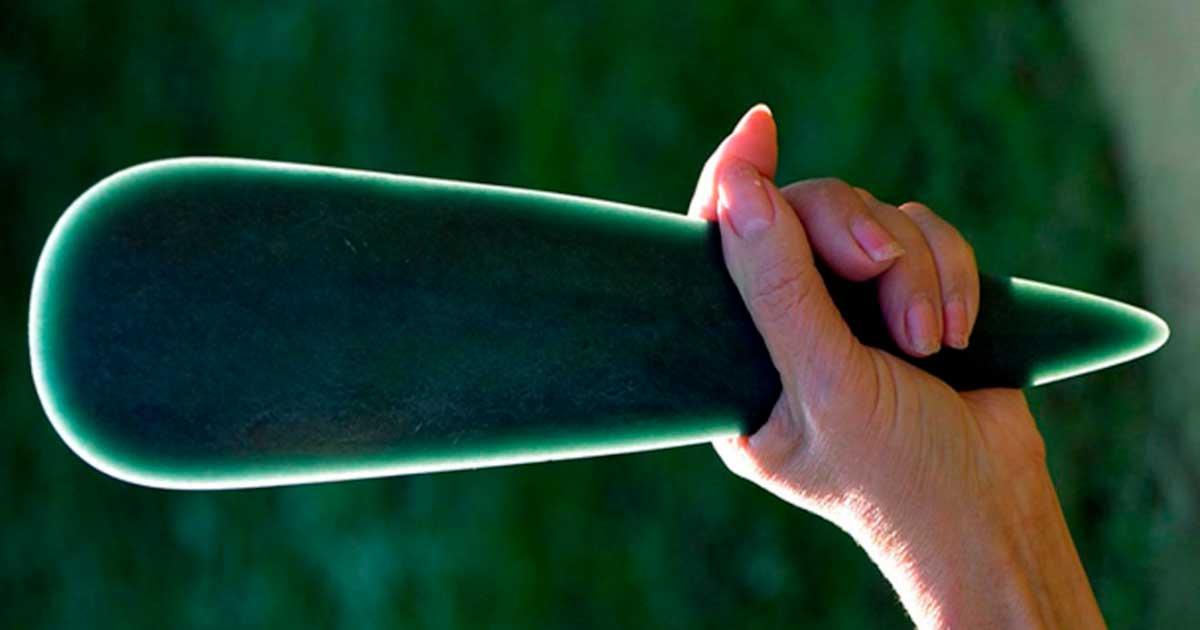
Jade Beauty: 15 Must-See Artifacts in Pictures
Jade has been used by ancient civilizations for thousands of years, dating back to the Neolithic period. The precious stone was highly valued by the Chinese and was often referred to as "the royal gem." Jade was used to create a wide range of objects, including tools, weapons, jewelry, and even religious artifacts. The ancient Chinese believed that jade possessed mystical powers, and it was often used to symbolize good luck, prosperity, and wisdom.
In Central America, the Mayans and Aztecs also had a strong appreciation for jade, and it played a significant role in their cultures. Jade was used for ornamental purposes, such as jewelry and figurines, but it also had practical uses, such as being carved into knife blades and other tools. The precious stone was so valued by the ancient civilizations that it was often used as a form of currency, and it played an important role in trade and commerce. Today, jade remains an important symbol of history, culture, and beauty, and it continues to be prized by collectors and enthusiasts alike.
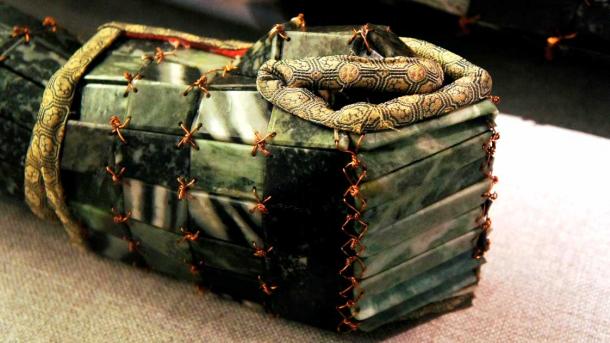
Detail of the hand section of the jade burial suit of Liu Sui, Prince of Liang, of Western Han (Zcm11 / CC by SA 3.0). In Han Dynasty China, elaborate ceremonial suits were created with polished pieces of jade, which were used for royal burials. In 1983, archaeologists found one of the most valuable jade suits in history. The suit belonged to Prince Huai and was made of 1203 pieces of jade and 2580 grams of golden thread.
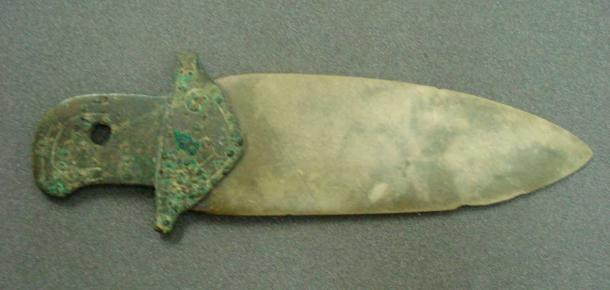
A jade dagger dating back an incredible 3,200 years to Shang Dynasty, China. (CC by SA 4.0 / Trustees of the British Museum)
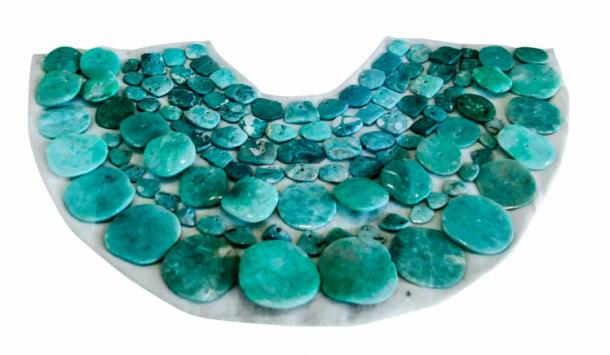
Ancient maya jade necklace. Source: mardoz / Adobe Stock
- Maya Elites Danced Wearing As Much As 25 Pounds of Jade Jewelry
- Fit for a King: Royals of Ancient China Buried in Jade Ceremonial Suits
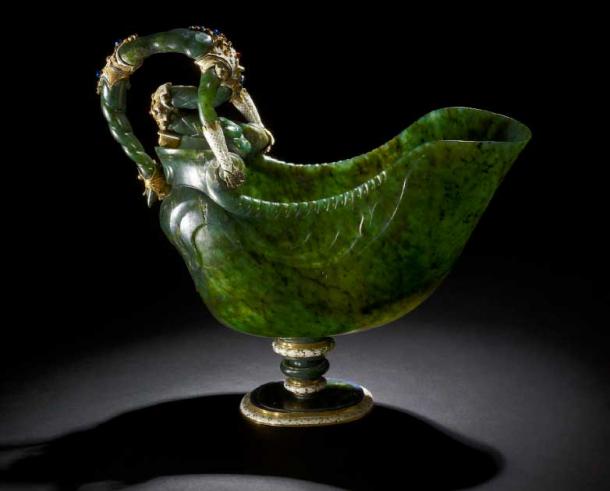
Shell-shaped cup made in Milan c. 1600 AD. Dark green jade; mounted in gold and enamelled; sides with honeysuckle pattern in low relief; handles formed of contorted dragon-like figure with two arms gripping the sides; mounts chased and enamelled white, details in ruby and sapphire colours (CC by SA 4.0 / Trustees of the British Museum)
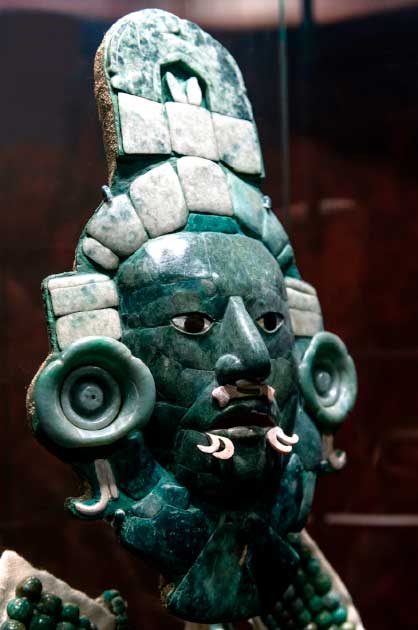
Maya funerary burial mask in jade and obsidian of the city state of Calakmul in the Peten rainforest, Mexico. Source: SL-Photography / Adobe Stock

Jade basin, China, 1774 AD. On the walls of this large basin, five spirited dragons chase two flaming pearls in and out of swirling clouds. The overall shape and decoration suggest that the basin was inspired by the colossal jade wine container that Khubilai Khan (1215–1294) commissioned in 1265. (Public Domain / Metropolitan Museum of Art)
- Han Period Tombs Full of Jade Discovered at the Origin of the Silk Road
- Holding Hands for 5,000 Years, A Couple with Mysterious Jade Rings and Dagger
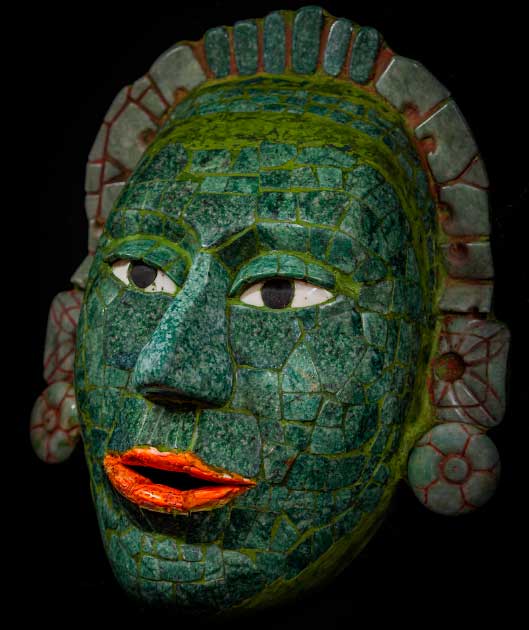
Jade mask, pre-Hispanic and pre-Columbian, Mexico. Source: Raul / Adobe Stock
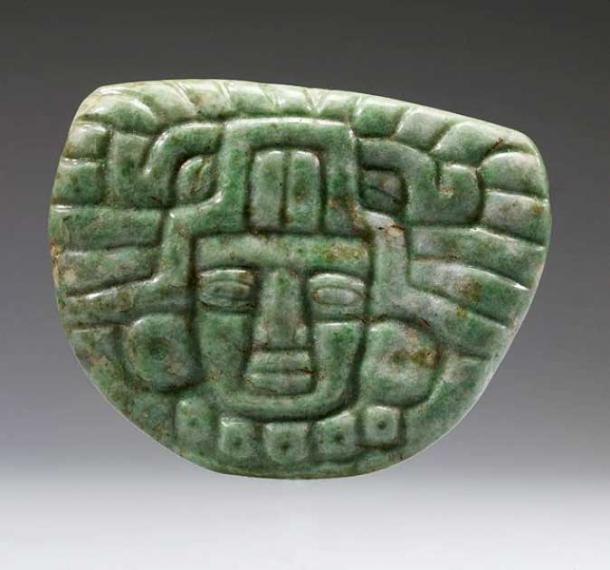
Jade pendant from the Late Classic Maya period. The pendant is carved in the standardized frontal rendering of a noble person wearing the formal head gear of the ruling elite, with unique features that document more than five hundred years of the jadeite carver's art. The flat pendants exemplify Middle and Late Classic figural pendant styles with the distinctive headdresses and impressive jadeite earflares and bead necklaces worn by the nobility. (c. 650 – 850 AD). (Public Domain)
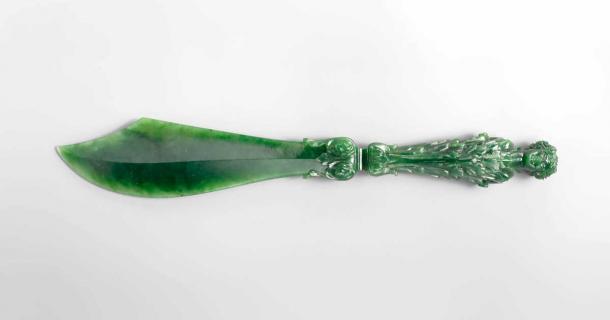
18th century jade knife, France (Public Domain / Metropolitan Museum of Art)
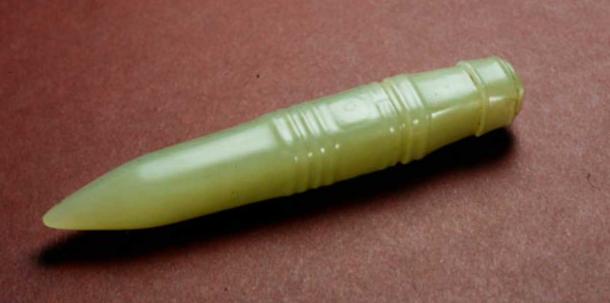
A polished jade stylus dating back to the ancient Liangzhu culture, China (c. 3300 – 2200 BC). The square shaped pin tapering to a point is carved in low relief on all four facets with lozenge-shaped eyes bounded by grooves and ridges. The top of the pin with a raised ridged band surmounted by a boss with bevelled edges. (CC by SA 4.0 / Trustees of the British Museum)
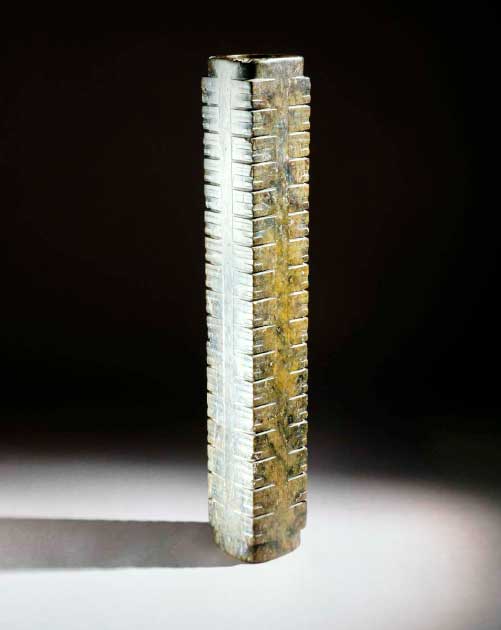
Large Chinese cong of opaque dark olive green jade. Liangzhu culture, China (c. 3300 -2200 BC). Among Neolithic jades, the cong displays the most complex form: a cylindrical tube encased in a square prism that gently tapers from top to bottom. Simple masks with circular eyes and bar-shaped mouths decorate the corners. Enigmatic in function and meaning, the cong probably signified wealth and social status. In a tomb found at Sidun, Jiangsu Province, numerous cong lay in a circle around the dead, suggesting that they also served a religious or ritual purpose. (CC by SA 4.0 / Trustees of the British Museum)

Knotted dragon pendant, China, 3rd century BC. This pendant takes the shape of a dragon with a sinuous body grooved to resemble twisted rope. It illustrates the extraordinary talent and skill of early Chinese jade carvers, in whose hands intractable jade seems a supple and malleable material. (Public Domain / Metropolitan Museum of Art)
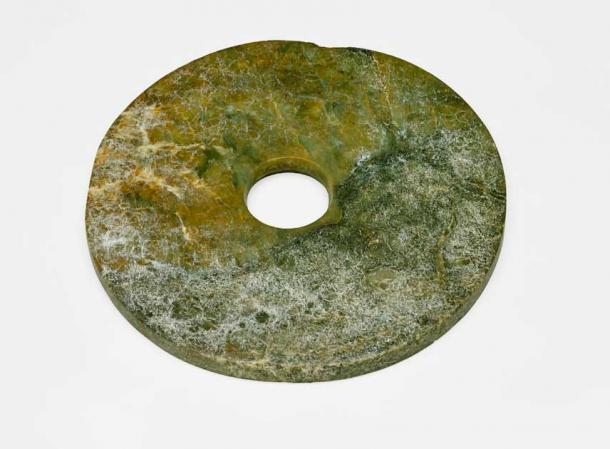
Ritual Object (Bi Disk) China, mid-3rd millennium BC (Public Domain / Metropolitan Museum of Art). Ancient Chinese bi discs were circular jade artifacts that were highly valued in ancient Chinese culture and symbolized good luck, wealth, and power. These discs were used in religious rituals, and some even had inscriptions that recorded important events or offered wishes for good fortune.

Jade plaque, c. 400 – 800 AD, Teotihuacan, Mexico. Suspension holes drilled towards the top of the plaque indicate that it was worn as a personal ornament and possibly, due to its large size, as a separate pectoral pendant. The design represents a Maya ruler in full ceremonial regalia sitting cross-legged on a throne. (CC by SA 4.0 / Trustees of the British Museum)
Top image: Stone Age jade axehead, Scotland, c. 4000 BC. Most of them were brought to Scotland around 4,000 years BC. Credit: Project Jade
By Joanna Gillan
















Comments
The below “polished jade stylus dating back to the ancient Liangzhu culture, China (c. 3300 – 2200 BC)” photo - https://www.ancient-origins.net/sites/default/files/styles/large/public/...
Think about the craftsmanship that took, and how it might have been done (required a lathe of sorts) and by whom. Like so many other other impressive VERY ANCIENT artifacts, an important question is rarely if ever discussed. It is this: how long did it take that culture to come up with and refine the techniques, skills and understandings in order to create a piece like that? And there would NOT have been just one piece of that craftsmanship made. If one piece of that skill level was created, there should be others, created the exact same period, and so where are those, where did those go?
What’s odd is that they dated this object to be that old. I would guess it’s because they found it in some deep cavern that had NOT been discovered by the hoards that came later and looted most other caverns. And so they assume the object is of the age of the sediments in the cavern that probably were carbon dated to 3k BC or so. But then this question pops up, how long did it take for that sediment to pile up and bury the object? Sediments pile up VERY SLOWLY. Takes thousands, maybe tens of thousands of years. And how long was the object laying there BEFORE the sediment began burying it? And how long did the object exist as a possession of the culture who made it, before that culture came to an end? And like today, did somebody of that older culture, also just FIND the thing laying in the dirt like we did? If the Earth is destroyed now, and tens of thousands of years later somebody is finding the relics - i.e., all the modern stuff that doesn’t rust away, as well as all the durable museum objects of today, would they know to date the objects differently, or all from one time period?
Would it be worth drilling into the object, taking a core sample, and doing multiple (pricey) double-blind uranium-radiometric tests? Probably not. So let's not get too hung up on ANY of their dating. IT COULD EASILY BE MUCH, MUCH OLDER! If I'm right, it's all pre-Ice Age, and the so-called 'Bronze Age' should be renamed, 'the age of great finds'.
Nobody gets paid to tell the truth.